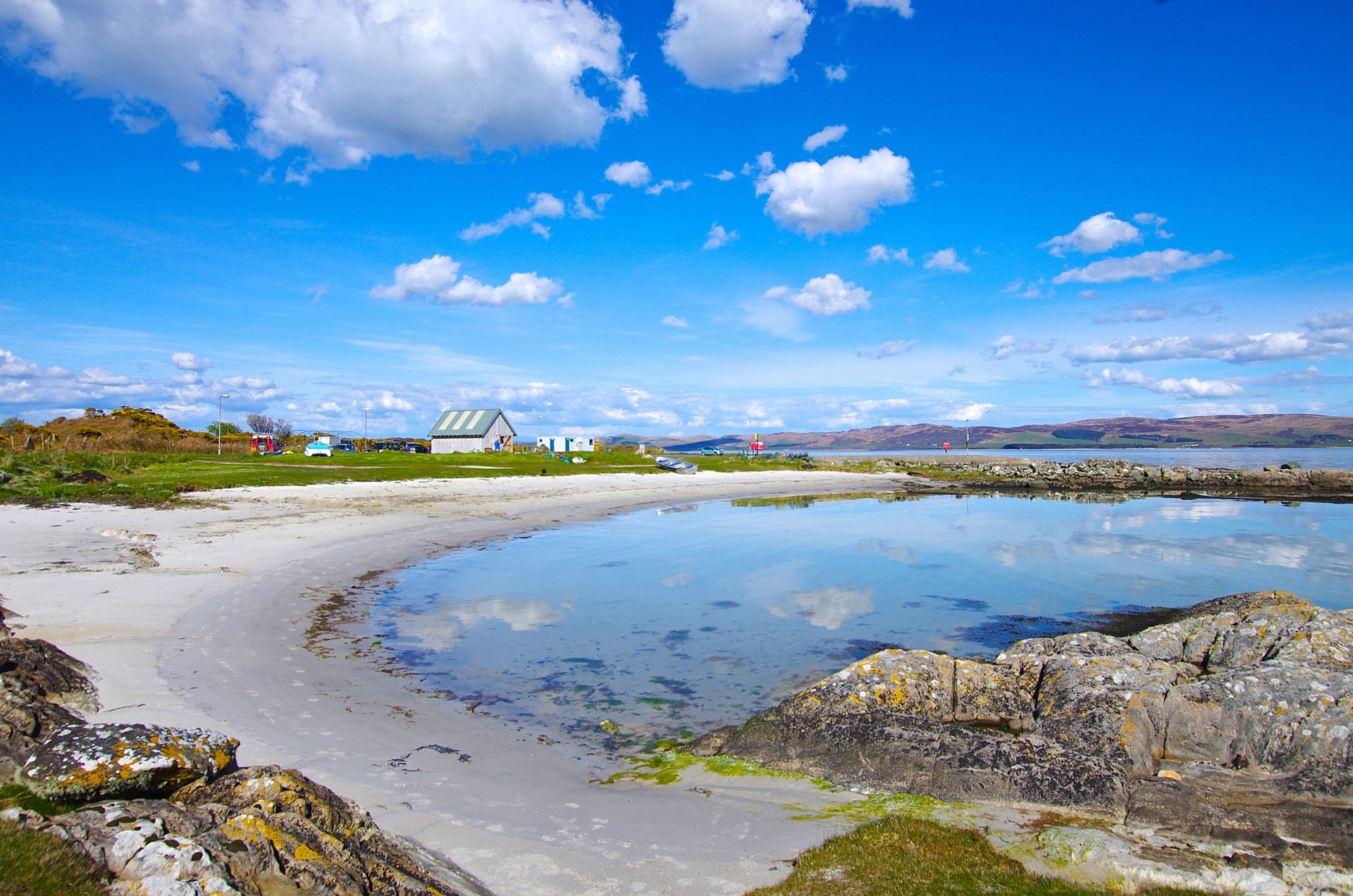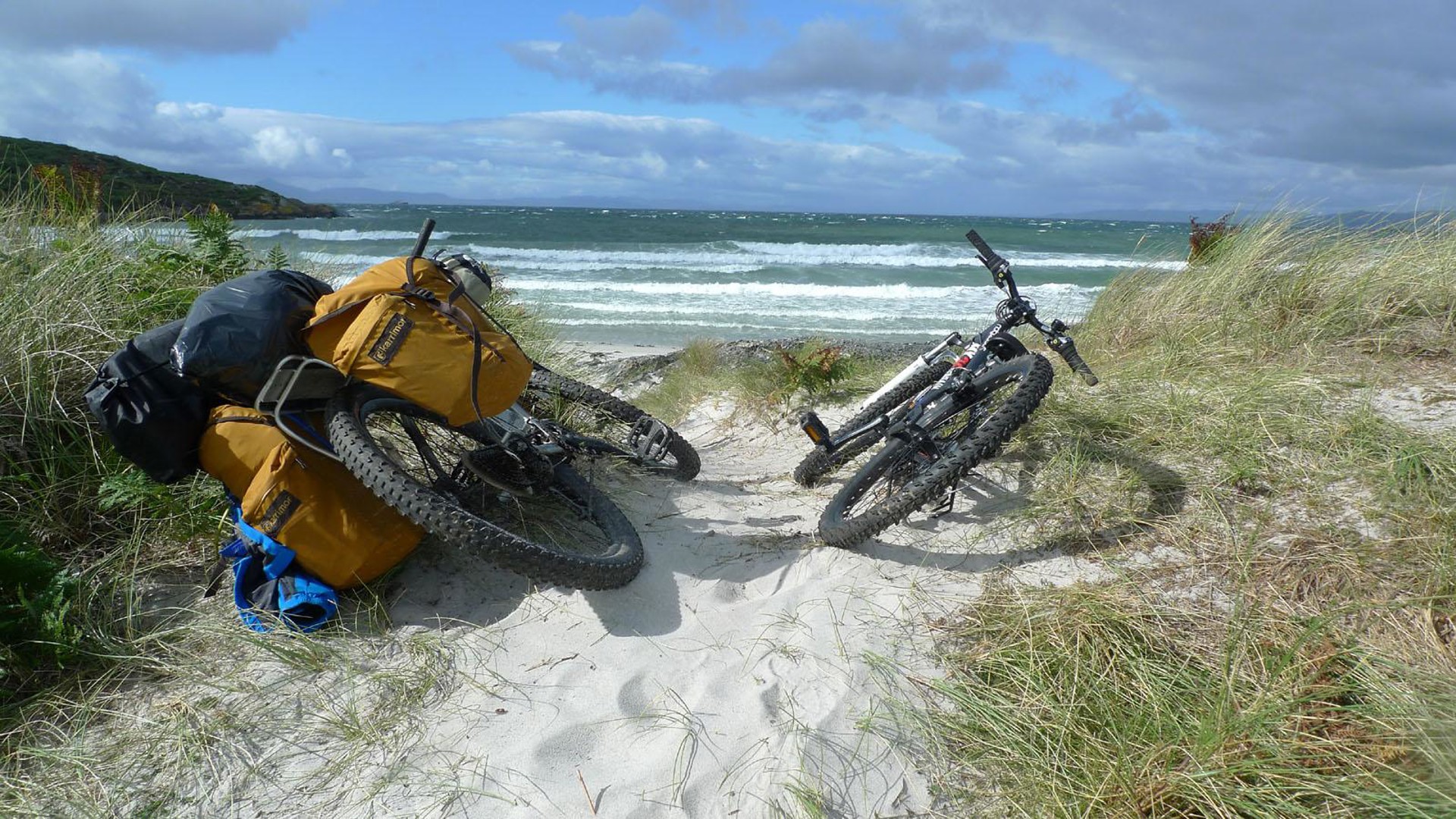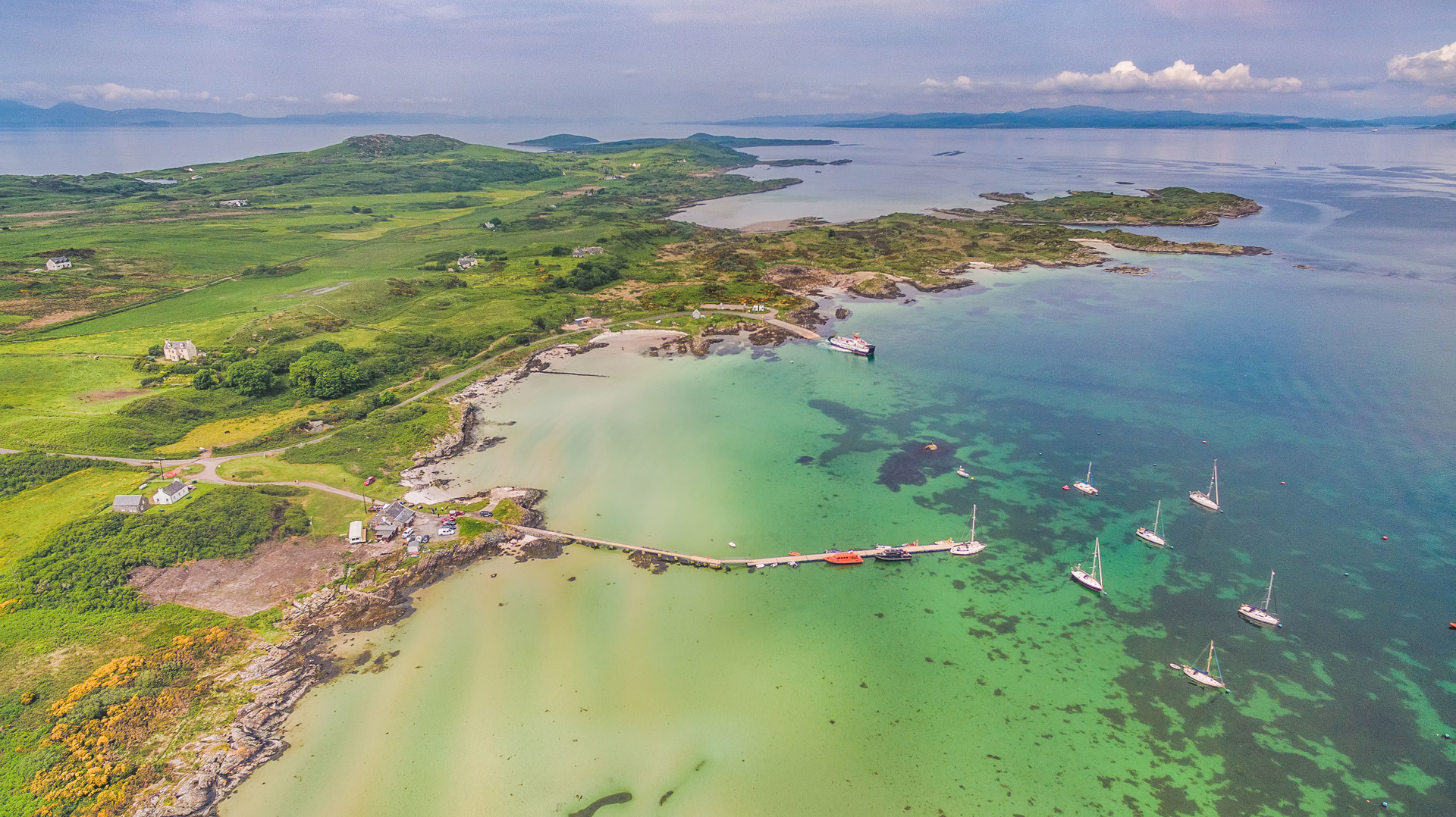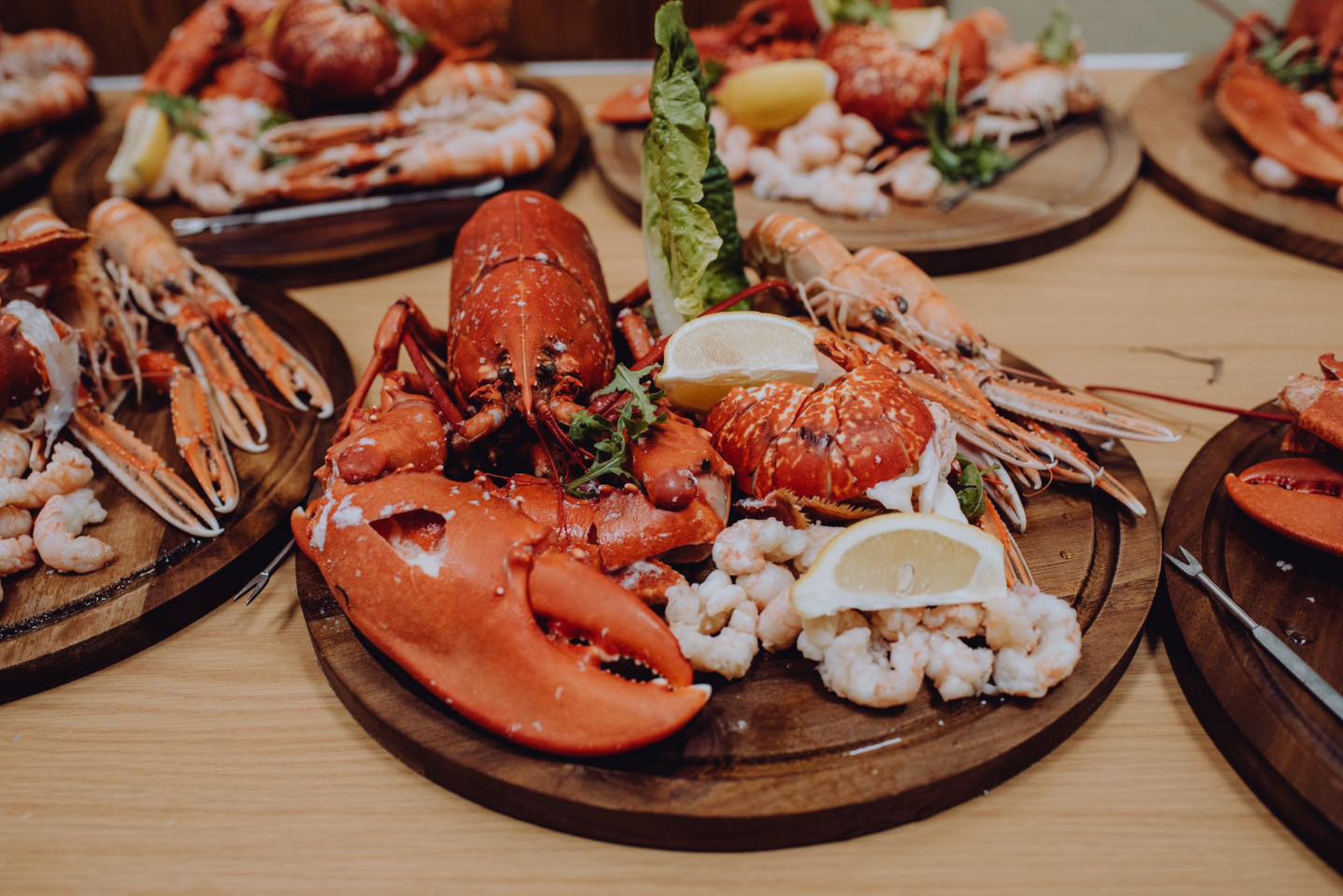Real Life Treasure Island: The Isle of Gigha
By Robin McKelvie
If it were not for a serious lack of coconuts the Argyll and Bute island of Gigha would be a real life Treasure Island. This sinewy charmer only measures seven miles by one and half miles, but it packs in a sweep of gorgeous white sandy beaches, superb places to savour the local seafood and, yes, swaying palm trees, just not of the coconut-bearing variety. Then most appealing attraction of all – something that the novel never had – is a real life, co-operative community who impressively run their own affairs.

The Isle of Gigha
I’ve been closely following Gigha’s fortunes since the community buy-out back in 2002. The buy-out was financed by £3.5 million from the Scottish Land Fund, via the National Lottery, and £500,000 from Highlands and Islands Enterprise. The community agreed to re-pay £1m over the following years, a huge undertaking for the fledgling community.
Back then the population was less than 100, but now it has zoomed up closer to 200, with the recent announcement of more community housing hopefully helping swell its population further, with young families in particular keenly sought. The rising population also helps secure the future of the primary school. I love too that Gigha not only generates its own electricity using second-hand turbines but makes enough for the community to sell back into the National Grid at profit. And any profit is churned back into the community.
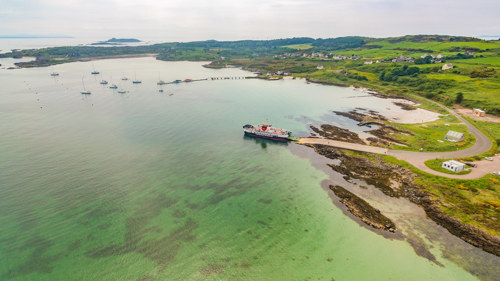
Achamore Gardens
More good news is the rebirth of the 54-acre Achamore Gardens I found this summer. The wildness of Nature seemed to be winning the battle here for a while. The gardens were revamped in 1944 by Colonel Sir James Horlick. He employed professional gardener Kitty Lloyd Jones, as well as head gardener, Malcolm Allan, who worked here for a remarkable 52 years. The fertile soil and mitigating effects of the balmy Gulf Stream have helped encourage the eclectic flora and fauna in these life-affirming gardens. Today Achamore Gardens employs two full-time gardeners, as well as helpful volunteers from the community. The gardens are glorious and a Gigha must-do, worth hopping over on the ferry for alone.

The Boathouse
You can say the same about the Boathouse. This legendary seafood temple overlooks a starched white sand beach and aquarium-clear waters just around from the CalMac ferry pier. On the menu are local oysters and the superb Gigha Halibut, which is farmed here. There are creel-caught local lobster and Machrihanish brown crab too. There is Gigha Halibut on the menu at the nearby The Nook informal food shack too. I tasted one of their plump smoked halibut sandwiches – utterly delicious.
Sadly, the Gigha Halibut farm is closing due to spiralling costs, but both eateries assure me they will continue to offer boat-fresh seafood. The lovely lady I chatted to at The Nook said, “It’s a real shame about Gigha Halibut closing, but we have lashings of other seafood available to us from the island and also from Kintyre, which is only three miles away across the water. People have a real appetite for the local seafood and we want to keep serving that.”

Gigha Activity Centre
On my most recent visit I was delighted to find new craft operations and that the watersports hire from Gigha Activity Centre has expanded. Handily they now have a modern fleet of 20 e-bikes, as well as more traditional bikes and watersports gear. They also provide child seats, tagalongs and canopy buggies too for younger children and toddlers. Bikes are a great way to get around the island, especially with a new off-road bike track going in that connects the new campsite with the north of the island. In total, there are 9km of new and upgraded paths that help visitors weave their way between the bountiful farmland and the beach-kissed coast.

The Isle of Gigha Heritage Trust always seem to have plenty of ideas and projects in the offing. And on hand for really opening up Gigha is the Isle of Gigha Ranger Service, with their excellent guided walks. On a hike you will see that the most southerly of the Hebrides is one of the most fertile islands in the archipelago - any walk or cycle around Gigha reveals this. The bountiful island farms and their cows offer creamy milk that goes into the renowned local cheese and helps conjure up delicious Gigha ice cream. There is also world-class beef and lamb, remarkable for such a compact island. Gigha offers the sort of fresh local produce many of us struggle to get these days in our own supermarkets.
Even though Gigha is small there seems to be something else to discover on every visit. This time I hiked north to check out the ‘Dwarf Stone’. Also known as the ‘Hanging Stone’, the distinctive cleft in the rock saw local lovers shaking hands through it to seal their union. It’s a romantic spot right enough, peering north to the majestic hills of Jura and Islay. Wherever you look on low-lying Gigha there is always drama on the horizon.

Image: Ogham Stone on Gigha
I used my Scottish Islands Passport App for this latest trip, which handily works offline if you download it first. The Gigha entry told me of a beach at Cuddyport, which I’d never chanced upon before. It’s a wonderful escape that I have all to my own. Well, that is apart from the deeply historic quern stone carvings. It’s hard not to fall for Gigha’s beaches, which for me are some of the best not just in Argyll and Bute, but in all of Scotland.
As I bounce away across the surf from Gigha I am already missing this island charmer. Maybe I’ll come back to check out the Gigha’s Dark Skies community group or perhaps to see how Gigha fits into the Hebridean Whale Trail. And I’ve not yet been in check out the newest arrival on Gigha's food scene - the Wee Isle Café at the Craft Units, which is run by family-owned Wee Isle Dairy, who produce that lovely ice cream, made with whole milk. There is always more to discover on this real life Treasure Island
